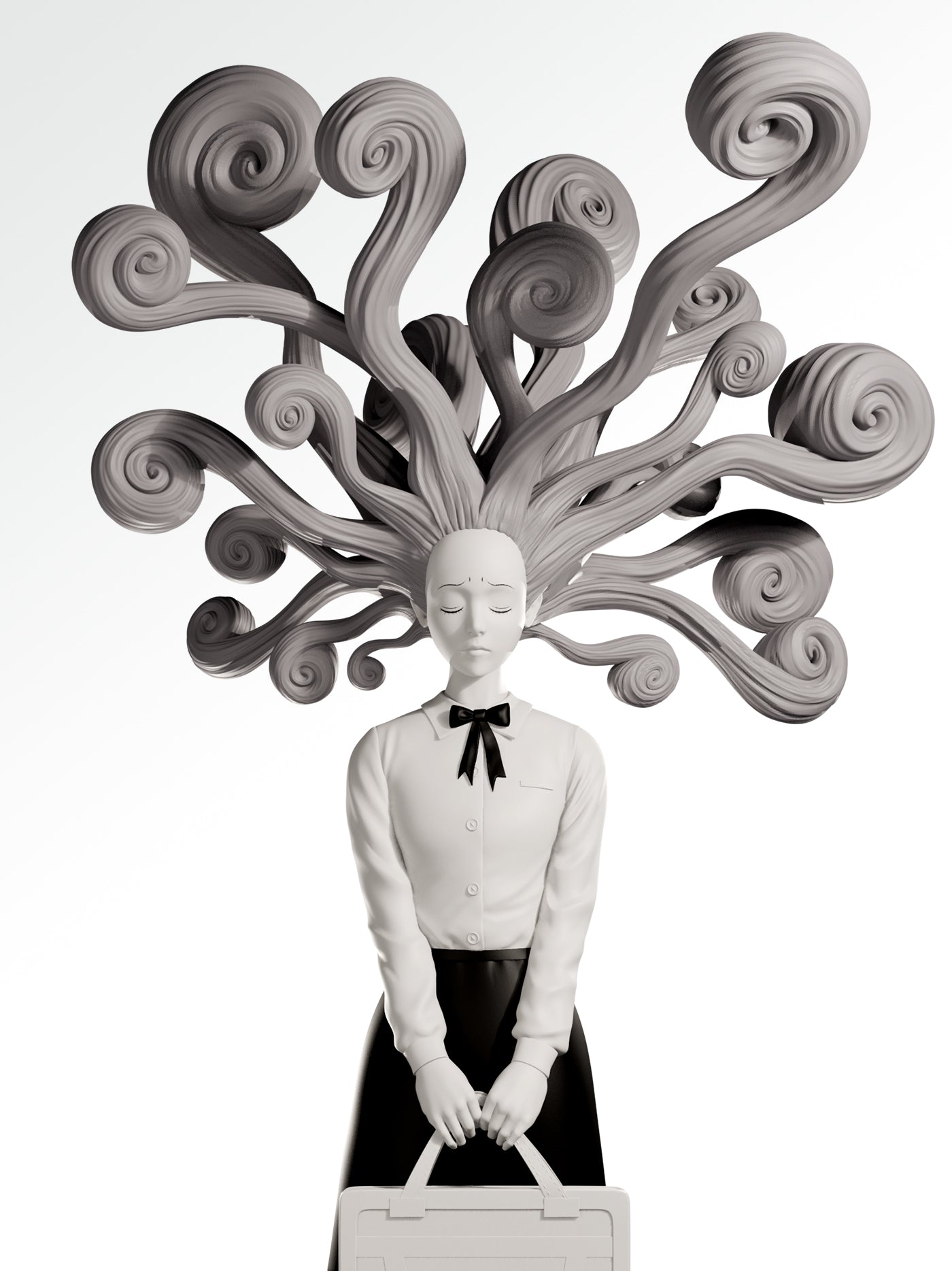DC has become a name synonymous with comic books. As one of the largest and oldest American comic book companies, it helped develop an entirely new genre of storytelling—one that went on to become an integral part of American pop culture. It’s become so ingrained in pop culture that films and DC subscription boxes have been modeled after the original comics.
Superman. Batman. The Joker. Lex Luthor. Darkseid. The DC Universe has too many iconic characters—both superheroes and supervillains—to count. Each one has a rich, vibrant history, teeming with life and energy.
But DC Comics and its seminal characters didn’t become a powerhouse sensation overnight.
This is its story.
When Was DC Comics Created?
The first iteration of DC Comics was founded in 1934. But who invented DC Comics? Malcolm Wheeler-Nicholson.
At the time, the company wasn’t called DC comics. The original company name was National Allied Publications. Wheeler-Nicholson didn’t have lofty goals for the company; he simply wanted to make a profit on the popular pulp comic market.
In February of 1935, National Allied launched its first publication New Fun: The Big Comic Magazine #1. This was successful enough for them to issue their next comic series in December of the following year: New Comics #1.
You may be wondering, "what does DC stand for in DC Comics?" or "Where did the name come from?" Well, in 1936, National Allied Publications was ready to release its third series, Detective Comics. But cash flow issues caused the first publication of the crime anthology to be delayed until March 1937. At this point, Wheeler-Nicholson was facing serious debt problems. As a result, he was forced to take on a partner to launch the detective comics series.
His partner, Harry Donefeld, was also a pulp magazine publisher and distributor. This merger led to the founding of Detective Comics Inc. Eventually, Donefeld forced Wheeler-Nicholson out of the company by buying out the rest of National Allied Publications.
Enter the Superhero
By 1938, Detective Comics Inc. was ready to launch its fourth title known as Action Comics. The first issue was written and illustrated by two men: Jerry Siegel and Joe Shuster.
In June of 1938, Action Comics #1 was released, featuring a new type of comic book character archetype, the superhero. There on the cover, holding a car over his head, was none other than the Man of Steel himself—Superman.
This DC character changed everything.
American teens went crazy for this exciting new superhero genre and story character, being drawn in by the action and real life feel of the comic. The introduction of Superman's daily life as Clark Kent and his love interest Lois Lane captured the hearts of many. Issues flew off the shelf. Practically overnight, Superman and Action Comics became a sales sensation. This surge in interest for the superhero genre was what inspired other superhero comic book companies to emerge, such as Marvel, which, ‘til today, sparks debate between whether Marvel or DC Comics is better.
Although many may have forgotten this today, the Adventure Comics series went on to become one of the longest and most successful runnings in DC history. Its final issue (#503) was published in 1983.
The Batman and DC
The team at Detective Comics Inc sought to capitalize on the genre’s success by adding more superheroes to the stable.
This led artist Bob Kane and writer Bill Finger to envision a comic book character who was a ruthless vigilante with no superpowers—just a lot of money, fighting ability, personal trauma, and detective skills. In issue #27 of Detective Comics: The Case of the Chemical Syndicate, they introduced Bruce Wayne, AKA “The Bat-Man.”
Like Superman, the Batman series was an instant hit. As a result, within a year, they gave him his own exclusive spin-off publication, Batman. According to History Draft, DC’s first logo began to appear on issues in April 1940, with the letters standing for “Detective Comics.” The logo was small and simple reading “A DC Publication.” This logo then was revamped into a larger version with a white background and was introduced to DC titles in November 1941.
At this point, the public began colloquially referring to the publisher as DC. The company also added the name “Superman” to the “A DC Publication” and soon began advertising it as, “Superman-DC.”
The Golden Age of Comics
The ‘40s was considered to be the Golden Age of comics. Over the next decade, National Comics Publications continued to expand on the lore of superheroes. They delved further into their mainstays while also introducing new superheroes like the Sandman.
Throughout the decade, the comic book industry boomed. For many Americans, it brought a sense of unity and hope, especially in the midst of a second world war. And comics helped push wartime propaganda—DC even had Superman join the fray, in print.
In 1946, National Allied Publications merged with Detective Comics, Inc., forming National Comics Publications. Also, during this time, the company began aggressively fighting copyright violating “imitations” of their now-iconic heroes by other publishers with characters like Wonder Man and Captain Marvel.
By the late ‘40s, the popularity of superheroes began to fade. As a result, National Comics Publications began focusing on other comic genres such as Westerns, crime, humor, and Sci-Fi. That said, several of their more popular superhero comic series continued to publish.
The Silver Age of Comics
In the mid-1950s, there was a resurgence of popularity with the superhero genre thanks to the Julius Schwartz decision to make The Flash a central character. Although he’d been featured in previous comics, Showcase #4 reimagined the character, breathing new life into the super speedster.
The public response to this led to a similar revamping of the Green Lantern. And the introduction of the most famous Superhero team—The Justice League of America into the DC Universe. According to Vocal Media Geeks:
“Even the mainstay characters of Superman, Batman, and Wonder Woman were radically overhauled, including Superman’s family ties and the extended Bat-family. Batman was reemphasized as a detective, and Wonder Woman was refocused to have adventures in a more mythological context.”
Along with a whole new host of characters like Supergirl, Brainiac, and Batwoman, four other major events helped changed the course of DC history:
- Writer Gardner Fox and artist Joe Giella’s Flash #123 introduced the shared universe “DC multiverse” concept in which there are infinite earths with different realities.
- The 1966 Batman TV show re-popularized superheroes. This version of Batman was much campier and light-hearted, which was reflected in the storylines over the next decade.
- In 1969, the Kinney National Company purchased National Comics Inc.
- In 1970 Jack Kirby—creator of Marvel’s Captain America, Fantastic Four, X-Men, Thor, Hulk, and Ironman—created new concepts, super villains, and universe expansions.
The Bronze Age of Comics
The ‘70s and ‘80s were marked by a laxening of censorship laws, which had previously hamstrung comic book storytelling by limiting what could be shown or discussed. This allowed comic books to follow a darker, grittier ethos that was more grounded in the world.
Per the Daily Dot, the Kinney National had to separate their entertainment and non-entertainment entities due to a price fixing scandal with its parking garage business. They then moved their entertainment entity under a new company called Warner Communications Inc.
By 1977, the comic book subsidiary wing of Warner formally adopted the name DC Comics.
But the world of DC and comics changed forever with the release of Frank Miller’s iconic Dark Knight Returns in 1986. The four-issue miniseries—both written and illustrated by Miller—introduced an older, meaner, and more world-weary Bruce Wayne in a corrupt and decrepit Gotham City.
It was a smash hit, rated amongst some of the best DC comic storylines, selling more than a million copies. This not only changed the course of DC history but the course of superhero comics in general.
DC Today
The next few decades saw an ebb and flow of the popularity of DC. Over the years, comic book sales continued to drop as the medium fell out of favor. Despite that, the company was buoyed by their superhero IP, which they leveraged into cartoons, film, and video game titles, creating DC entertainment.
Christopher Nolan’s Dark Knight trilogy—based on Frank Miller’s limited series—helped DC regain its pop-cultural relevance and led to a resurgence in comic book sales.
This was followed by several DC films distributed by Warner Bros, including a Justice League team-up, directed by Zack Snyder.
Today, Batman, Superman, and the rest of the hero pantheon are alive and well, joined by a cast of exciting new heroes, villains, worlds, and adventures in the DC extended universe. The most recent focus has been on DC Future State in which: “The Multiverse has been saved from the brink of destruction, but the triumph of DC’s heroes has shaken loose the very fabric of time and space!” Keep an eye out for Justice League Dark because of this!
DC Collections for True DC Fans
When Malcolm Wheeler-Nicholson first founded his small comic book company, he never could have imagined that it would become a billion-dollar company and a global sensation. But fortunately for all of us, it birthed countless beloved characters and stories that we still cherish to this day.
Are you a DC fanatic?
CultureFly has DC collections for you. Whether it’s our Superman, Batman, or Justice League bundle, you can grab a surprise assortment of DC Comics gifts including incredible collectibles, apparel, and accessories today with our mystery DC geek box.
We also offer subscription boxes for your favorite characters: Star wars, Naruto, Avatar, Supernatural, anime boxes, and much more. Check it out today!
Sources:
Marx, Barry. Fifty Who Made DC Great. “Major Malcolm Wheeler-Nicholson DC Founder”
History Draft. History of DC Comics. https://historydraft.com/story/dc-comics/timeline/398
DC Database. Action Comics Vol 1.1 https://dc.fandom.com/wiki/Action_Comics_Vol_1_1
History Draft. History of DC Comics. https://historydraft.com/story/dc-comics/timeline/398
Vocal Media Geeks. History of DC Comics.https://vocal.media/geeks/history-of-dc-comics
Daily Dot. What does the ‘DC’ in DC Comics stand for? https://www.dailydot.com/parsec/what-does-the-dc-in-dc-comics-stand-for/
The Hollywood Reporter. Why 'Batman: The Dark Knight Returns' Endures as a Comic Book Classic. https://www.hollywoodreporter.com/heat-vision/why-batman-dark-knight-returns-842518
DC Comics. DC Future State: A Glimpse Into the Future of DC. https://www.dccomics.com/blog/2020/10/15/dc-future-state-a-glimpse-into-the-future-of-the-dc-universe






















